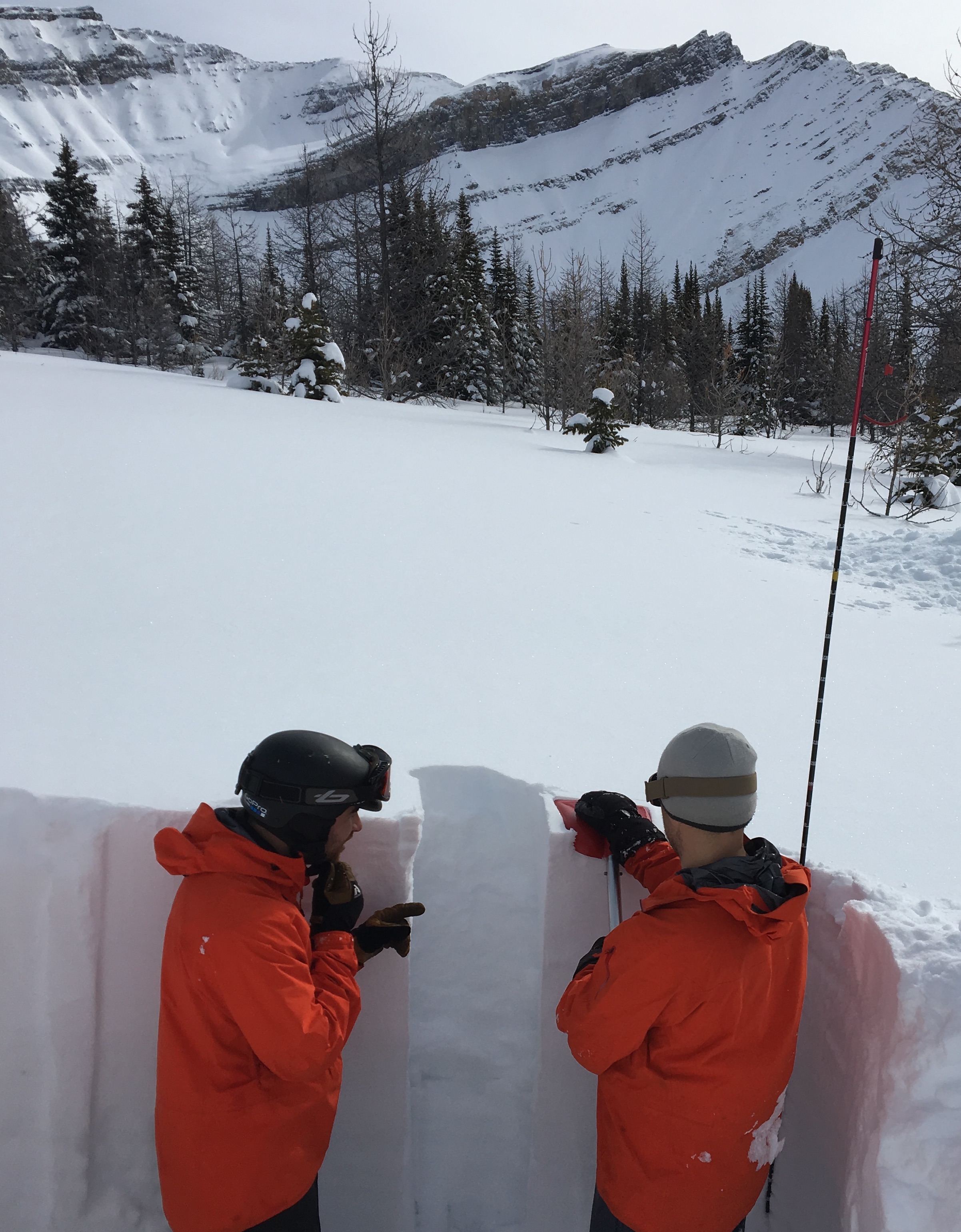Since the road was closed and the hazard was high we bought lift tickets and went to Lake Louise for the day. Toured outside the ski area boundary for a bit to do some snow profiles. We stuck to super conservative terrain at treeline and below given the avalanche activity we saw yesterday. We only skied really low angle and kept extremely far away from any possible runouts. Saw lots of evidence of the big avalanche cycle adjacent to the ski area in uncontrolled terrain.
We did a number of compression tests and got very consistent results in all of our pits. Several easy shears were found in the upper 30cm of the snowpack in generally low density / softer snow. Most disconcerting and not especially surprising were the pops and drops we got in the hard range down 60cm and 80cm. These were very dramatic and found in all of our pits. We also had three deep failures in the hard range collapsing in the depth hoar 120cm down. (and, we didn't cut the blocks down into the depth hoar in all cases, so these results are pretty sketchy.)
We didn't want to wander into any real avalanche terrain so we did a rutschblock test as a demo on a very low angle slope (well below the 25 degrees required for a real RB test.) Surprisingly even on this incredibly low angle slope we still got a whole block RB5 down 80cm on bigger facets with all the snow from recent weeks now settled and sitting on this layer as a slab. On an RB 6 we got the edge of the block to go as well down 60cm just like in our compression tests.
These results correlate well with all the avalanche activity we saw yesterday as well as various fracture lines we could see adjacent to the ski hill in the backcountry. You can see another fracture line in the background of the photo with the lads doing one of the tests.
Not a good time to be stepping out and testing the snowpack. We were definitely stepping back and becoming very very cautious in our activities over the last few days.

